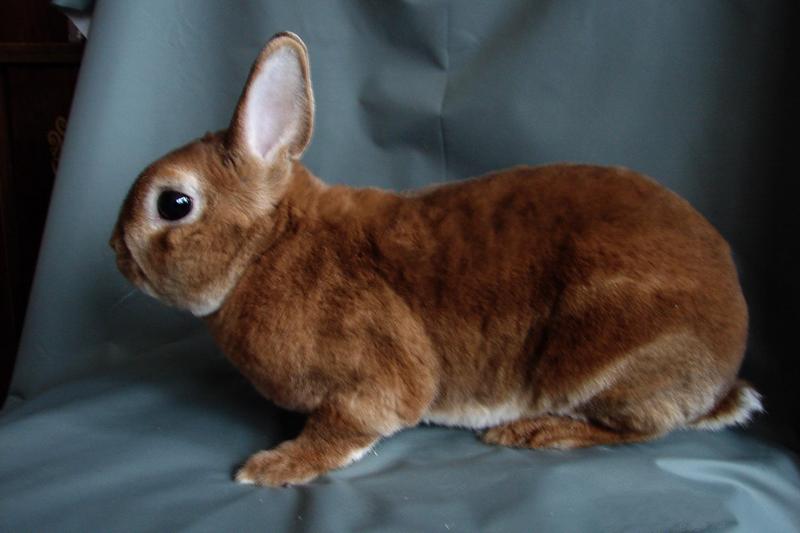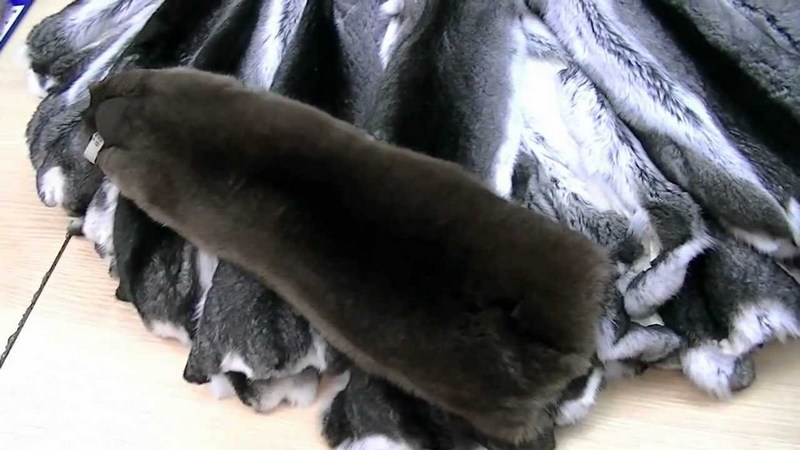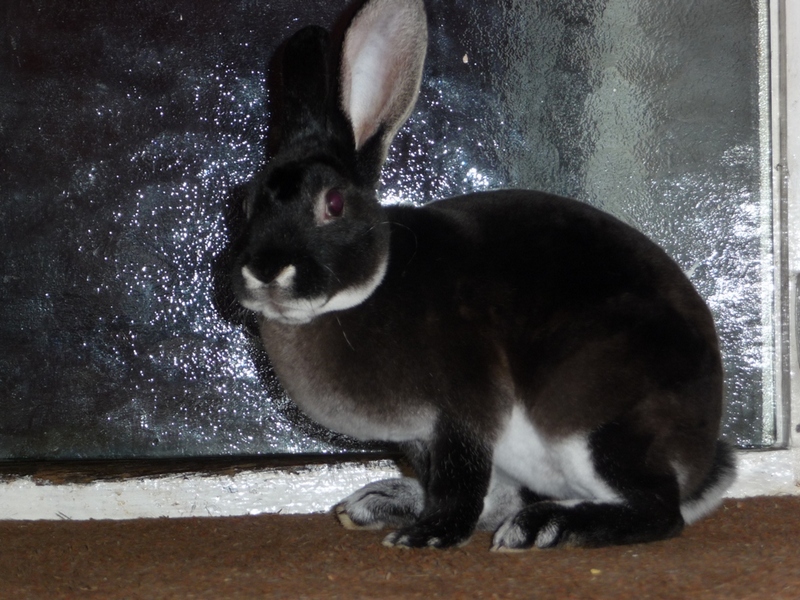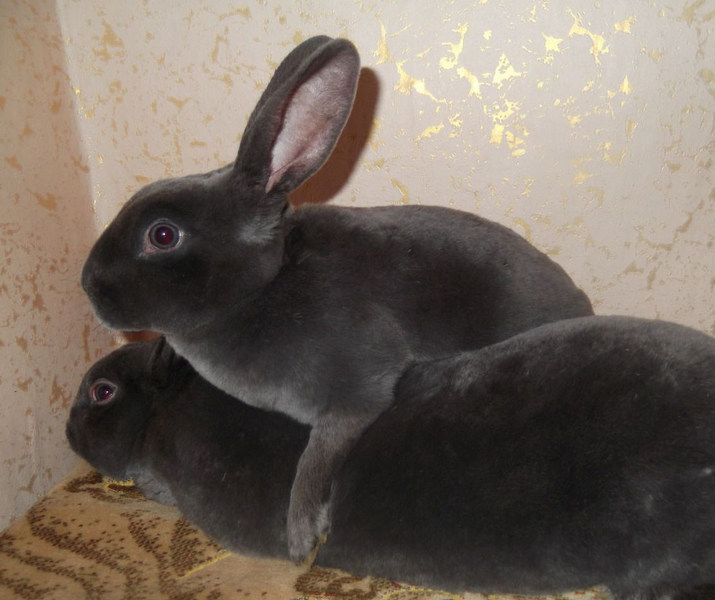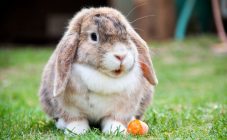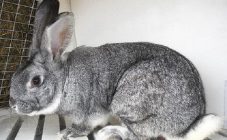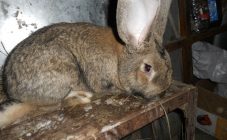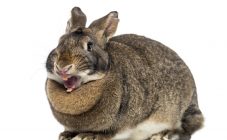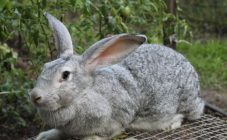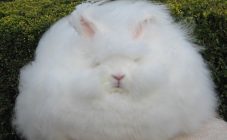Content:
Breeders never stop breeding and studying new breeds of rabbits. Rex rabbits are one of these young types. They are famous for tasty meat, unpretentious care, low cost, high-quality velor fur.
Origin story
The breed of short-haired rabbits was bred in 1919 in France, was obtained on one of the local farms as a result of the appearance of a hairless specimen among the bred rabbits. In those days, such mutants periodically appeared in every farm, but they were removed from the droppings. But one of the breeders decided to keep the animal. As the rabbit grew older, it developed a beautiful, thick and soft coat, reminiscent of velvet to the touch. After five years of breeding this variety of rabbits, the breed was presented at a Paris exhibition, which had an official character. The breed was officially registered there.
Rabbit Rex (rex rabbit) in translation from Latin - "royal". After registration, rabbits spread throughout America and Europe. Rexes have become in demand in Switzerland, Austria, Italy and Germany. From the Federal Republic of Germany, rabbits were brought to the Soviet Union. Since during this period it was forbidden to export pedigree animals from Germany, the scientist A.S. Serebrovsky went for a trick. Regular and royal rabbits were crossed. The litter was transported across the border. In the USSR, the scientist continued to study the genetics of the breed. The result is the breeding of the purebred Royal Rex breed.
Description of the breed
The following standard features of the Rex breed are distinguished:
- Rabbits are large: body length reaches 54 cm.
- The head is elongated. This characteristic is more inherent in females, in males the head is larger and rounder.
- Small feet are very compact.
- The ears are of medium length and vertical orientation.
- Thin bones give the rabbit grace.
- Rabbit weight ranges from 3.5 to 5 kg. Monthly rabbits weigh 600 grams, at three months they weigh 2.1 kg, and by the age of 4 - 4.5 months, an individual can weigh 2.5 kg.
- Animals have excellent fur characteristics: the length of the short coat does not exceed 2 cm, the fur is thick and soft. Feels like velor.
- The main feature of the breed is considered to be crooked and short mustaches. At first glance, they may seem underdeveloped. This trait distinguishes Rex from other breeds. Shortness is clearly visible in young animals.
Fur characteristics
The excellent fur characteristics that the royal rabbit possesses are due to the unusual growth of the hairline. Rabbits have the same length in both downy and guard bristles. The length of the coat differs in its shortness from the length of the coat of other subspecies. Rabbit breeders distinguish between the length of the main and guard fur, which is 1.8 - 2 cm, and the length of downy hairs, which is slightly shorter than the main one and equal to 1.7 cm. In comparison with other breeds, the guard fur is thin. Rex's coat has no layering and a wide gap between the skin and the hairline. This makes the fur soft and smooth. In terms of tactile sensations, it resembles velor or velvet fabric.
Breeders have bred several varieties of Rex, whose fur resembles that of other animals.For example, the color of the marder resembles the fur of a marten. This variety is available in two standards: common rabbits and dwarfs. Dwarf marders are bred due to their popular color as a pet. The variety Castor Rex is brown in color and resembles a beaver skin. There is a third type of especially valuable fur - Chinchilla Rex. Among all the rabbit breeds that successfully replace the skin of the chinchilla, the Rex rabbits are not inferior even to the chinchilla breed of rabbits. Other colors of the breed are presented in an exceptional way.
Choosing a good rabbit
It is worth buying representatives of this breed very carefully. Purebred Rex rabbits are quite rare, so you can buy a fake or a non-purebred rabbit in the markets. The breed is rare because female rabbits have a low fertility rate.
Signs of Rex rabbits:
- The pure blood of the rabbit is manifested in the thin bones, the powerful structure of the torso.
- Rabbit fur has strong pubescence and is soft. When inspecting the cover, there should be no receding hairline, scratches or bites.
- The hind legs have soft fur.
- The rabbit must be active.
Signs of breed culling include:
- An adult rabbit weighs less than 3.5 kg or more than 5.5 kg.
- The ears are different from each other, thin and fall off.
- There are bald patches on the coat.
- The ears are more than 13 cm long and have underdeveloped hair.
- The trunk has deviations from the standard constitution.
Content
The breed is quite demanding in terms of keeping conditions. Rabbits can live in free-range enclosures or cages. The cages should be made of durable wood. Plastic should not be placed in cages as these rabbits can chew on it. The floor is made hard, straw, sand or coarse shavings are laid on it. As a prevention of diseases and the development of infections, the floor is set to a mesh. With this method of building cages, excrement does not accumulate in the rabbits' dwellings.
Feeders should be placed in a fixed state on one of the walls. It is possible to use bowls made of cast iron material. In this case, care must be taken that the rabbits do not scatter feed. If food gets on the floor, rabbits can trample it and then eat it along with dirt or excrement. This will cause indigestion and disease. For drinking, it is worth installing a vacuum drinker.
A dwarf or common Rex is a rabbit suitable for domestic use as a decorative animal. Rexes have a calm and affectionate character. In the house, they need to prepare a dwelling. It is important to communicate more often with the rabbit, hand-feed him, so that he gets used to people faster. Sharp corners and harness can be dangerous for the rabbit. So that the pet does not get bored, toys are bought for him or they are made from scrap materials.
Feeding
The Rex diet should be carefully prepared. You can not eat foods that can cause disruption of the digestive system. Such foods include: cauliflower, beans, large quantities of cabbage, tomatoes and lettuce.
It is important for rabbits to include branch feed, silage, compound feed, seasonal fruits and vegetables, hay, roughage, fresh grass in the diet.
As a supplement, Rexam is given a vitamin and mineral supplement. With a meager supply of root crops, they are primarily provided for lactating females. Rabbits can be fed with goat's milk. In winter, they eagerly eat snow when the water in the drinkers freezes.
Breeding
The breed rabbit has low fertility. One litter can have no more than 6 newborns. Babies need to be cared for or they may die.
Sometimes the female may refuse to take good care of the babies. In such cases, rabbit breeders add babies to rabbits of other breeds, which have a well-developed maternal instinct. This increases the offspring's chances of survival.
The okrol period is autumn. In rare cases, it can occur during the winter. Okrol comes at night or early in the morning. Duration - from 20 minutes to an hour. The female's milk appears after birth. Rabbits of this breed have a good maternal instinct. The dwelling is prepared in advance. Carefully take care of newborns: after childbirth, they lick the babies, feed them with milk, make sure that the babies do not freeze.
Vaccination
These rabbits are routinely vaccinated like other breeds. Be sure to vaccinate against myxomatosis and viral hemorrhagic disease. At the age of 2–3 months, they are vaccinated against rabies. Before each vaccination, a worm treatment should be carried out.
Breed advantages and disadvantages
Disadvantages of the breed:
- Low fertility.
- Rabbits are shy, they have no resistance to stress.
- Too many babies can die if not properly cared for.
- Rexes can hardly tolerate hot weather above 25 degrees.
- Demanding care.
Breed advantages:
- Delicate meat.
- Fast enough weight gain.
- Rabbits have a varied diet.
- They can withstand low temperatures down to -30 degrees.
Rabbits of the Rex breed are demanding in care and maintenance. With the right choice of purebred rabbit, you can get small but very valuable offspring. Rex require the usual vaccinations of all breeds, a balanced and nutritious diet and keeping their cages clean. The breed is famous for its good selfish performance. Rabbit skins are used to make fur coats that imitate the expensive fur of chinchillas, beavers and martens.
